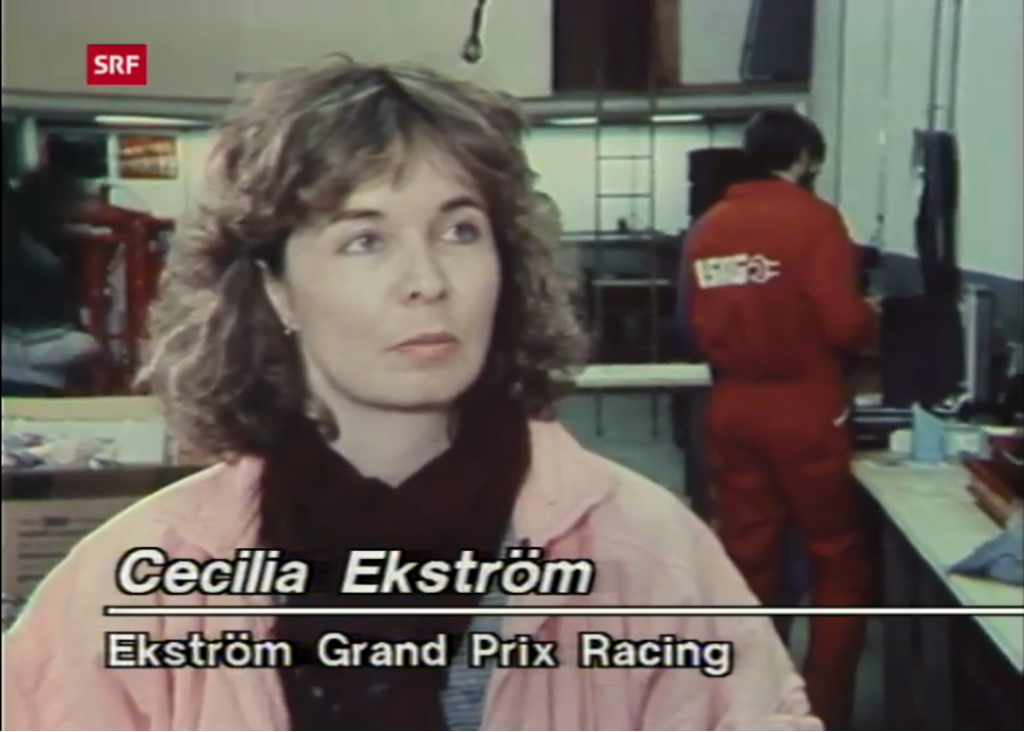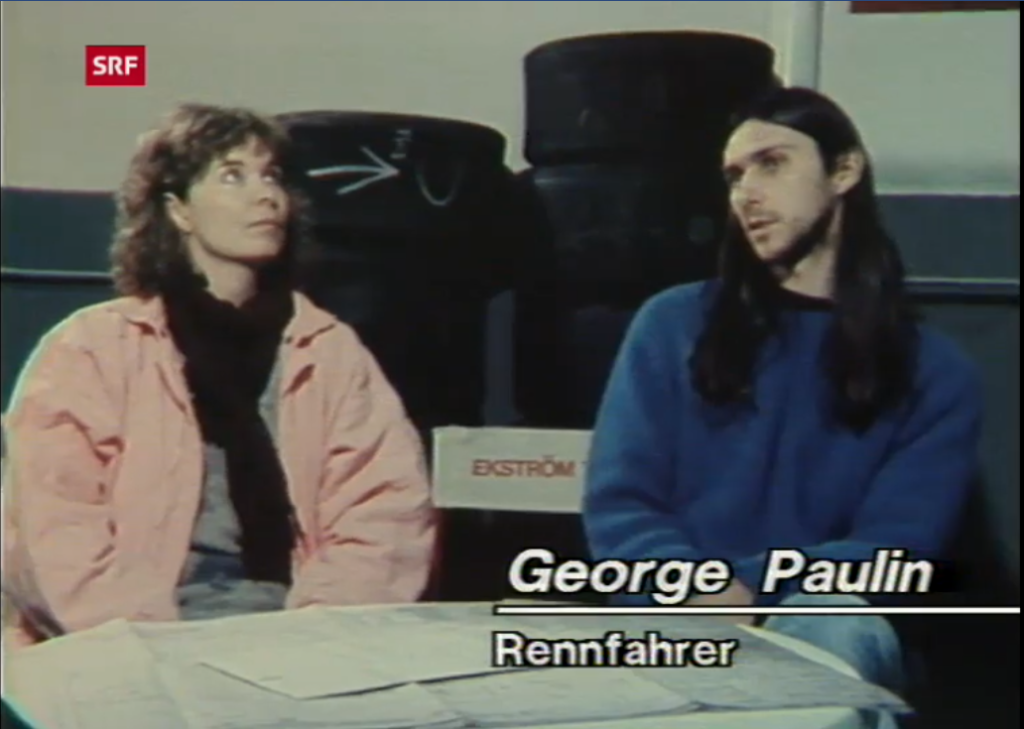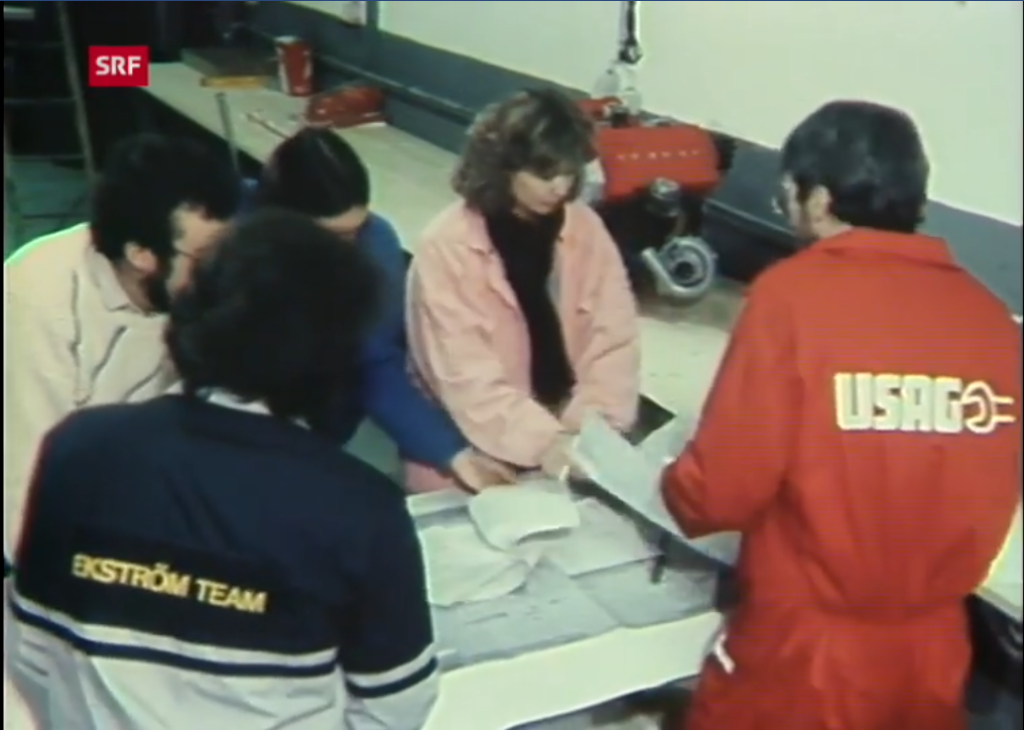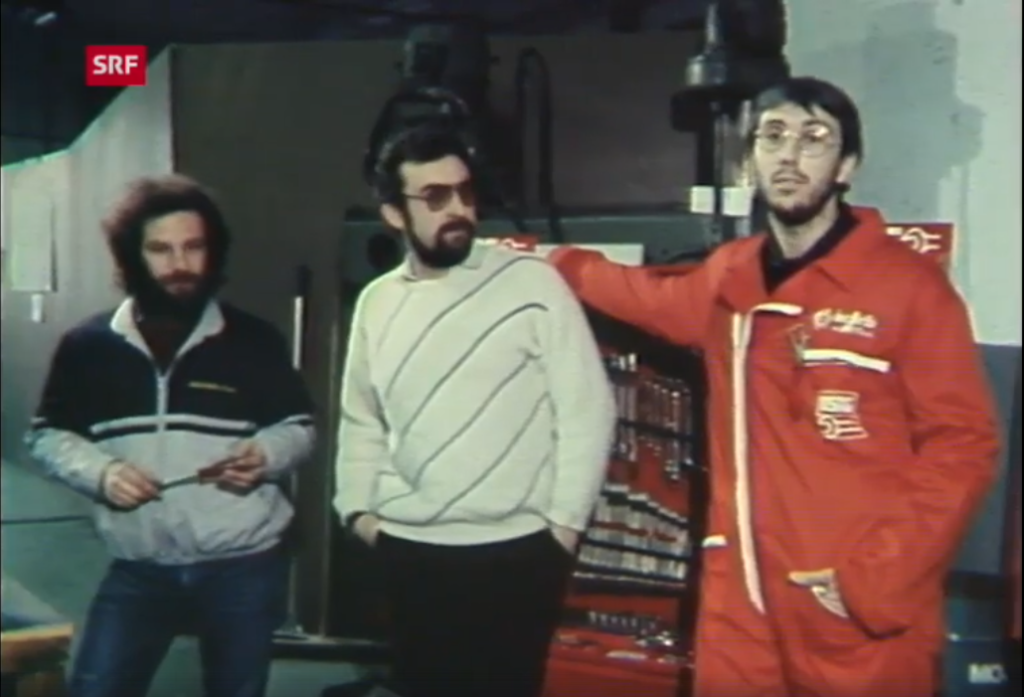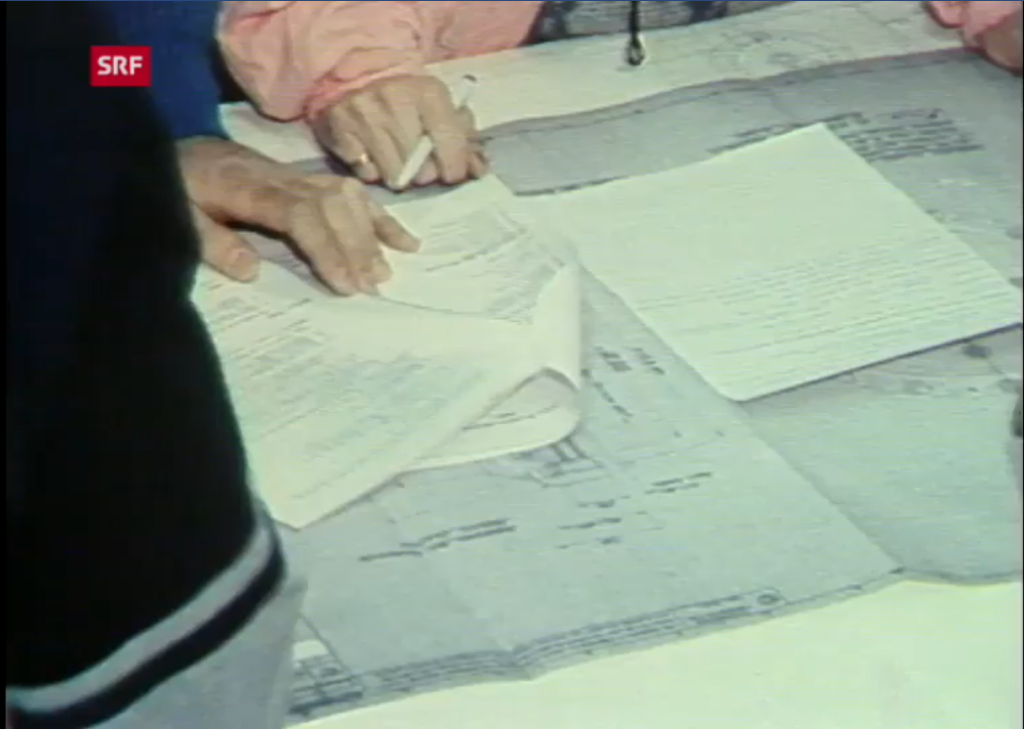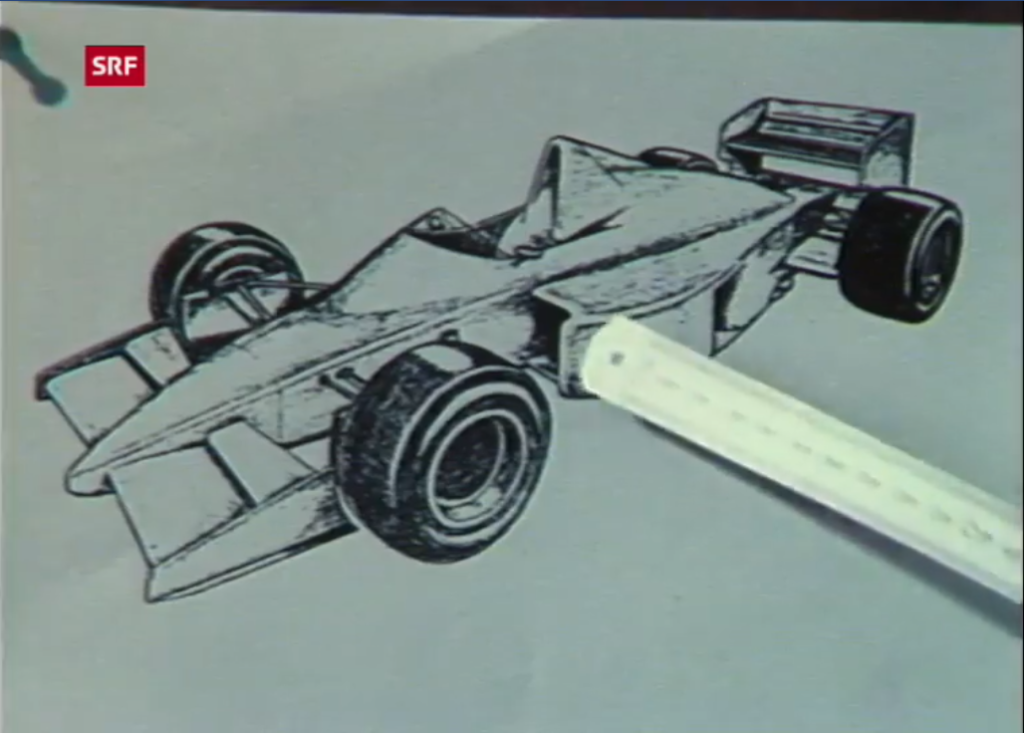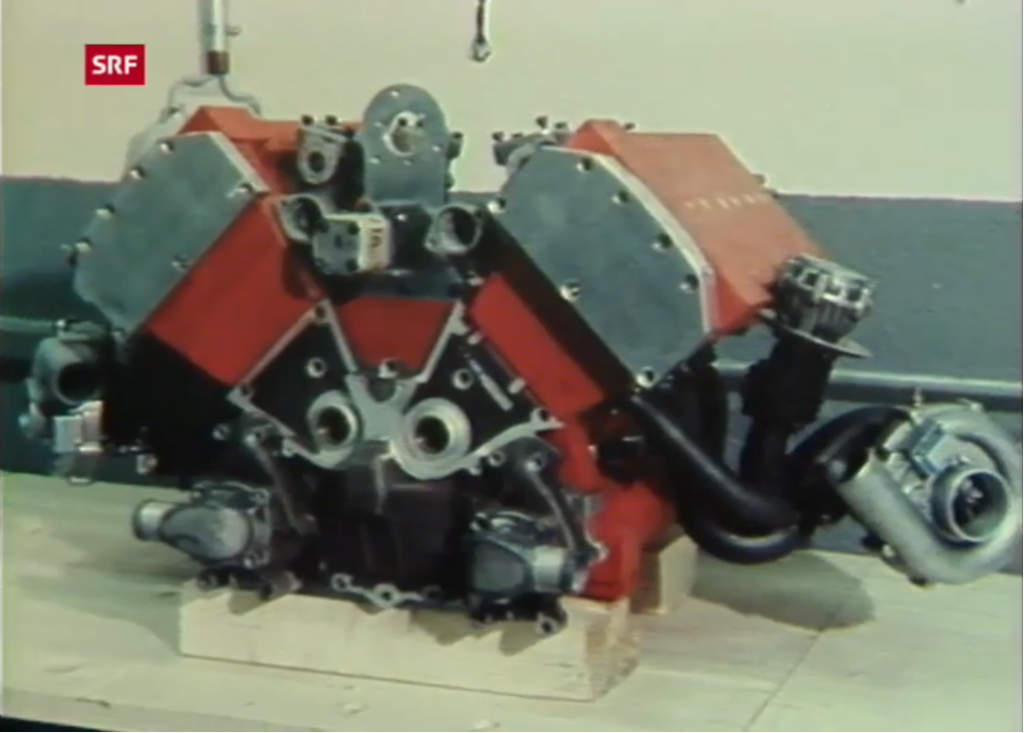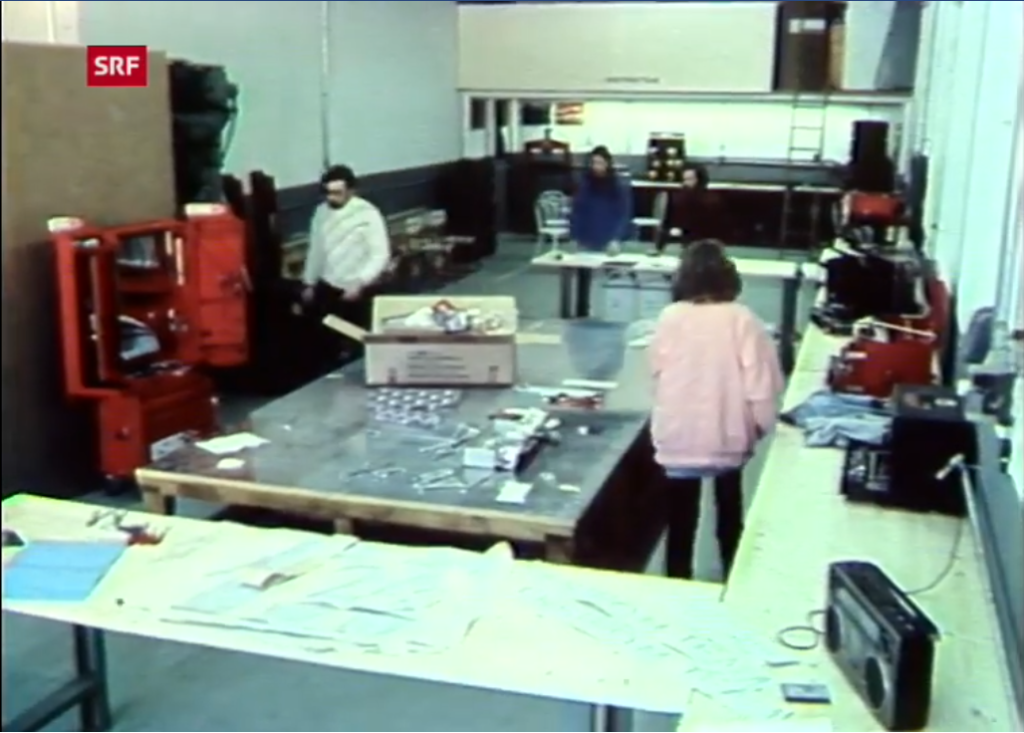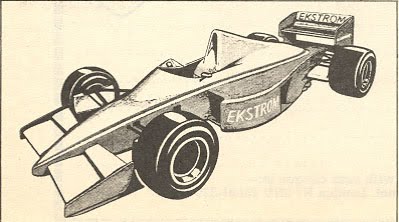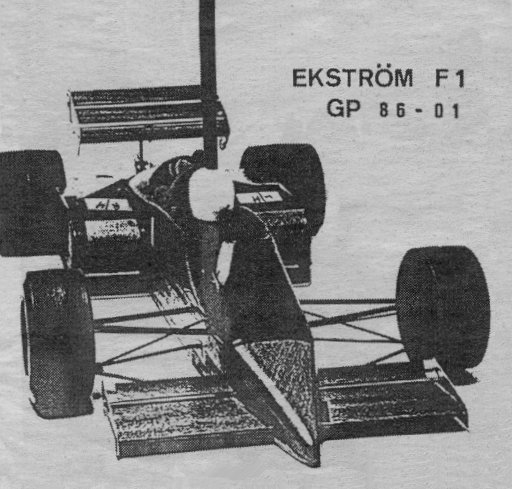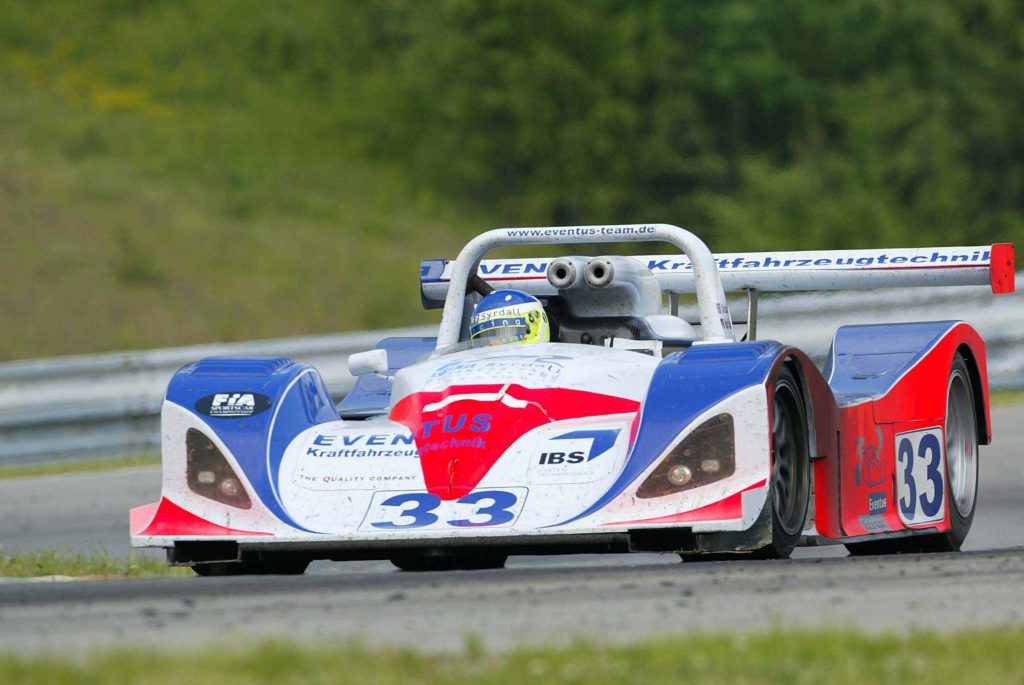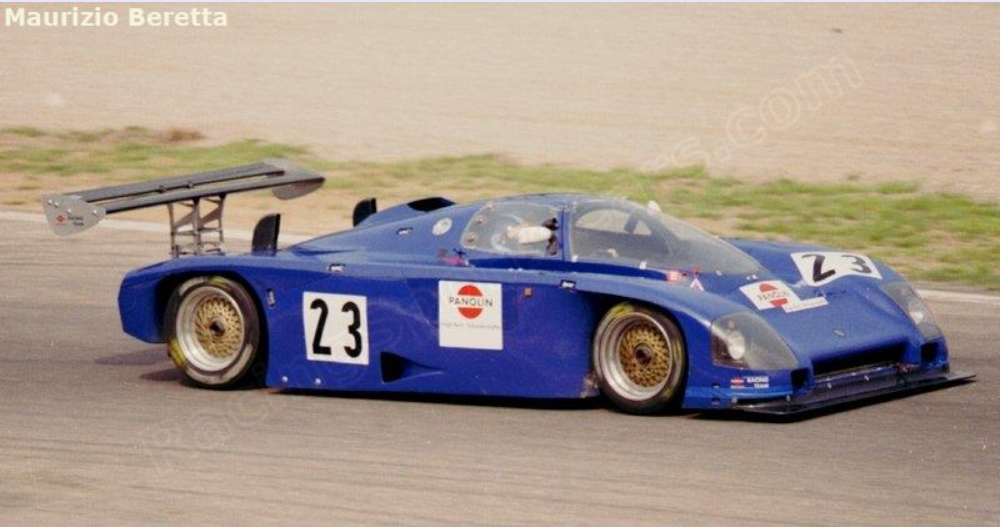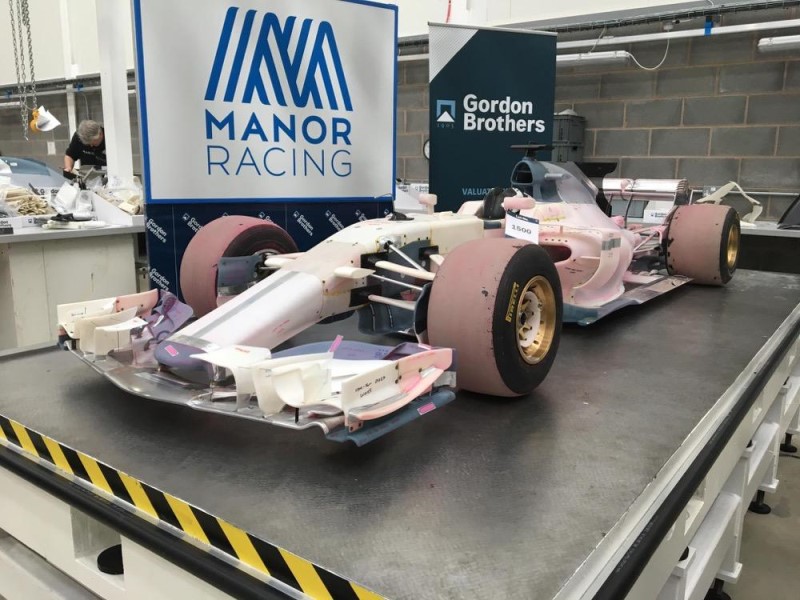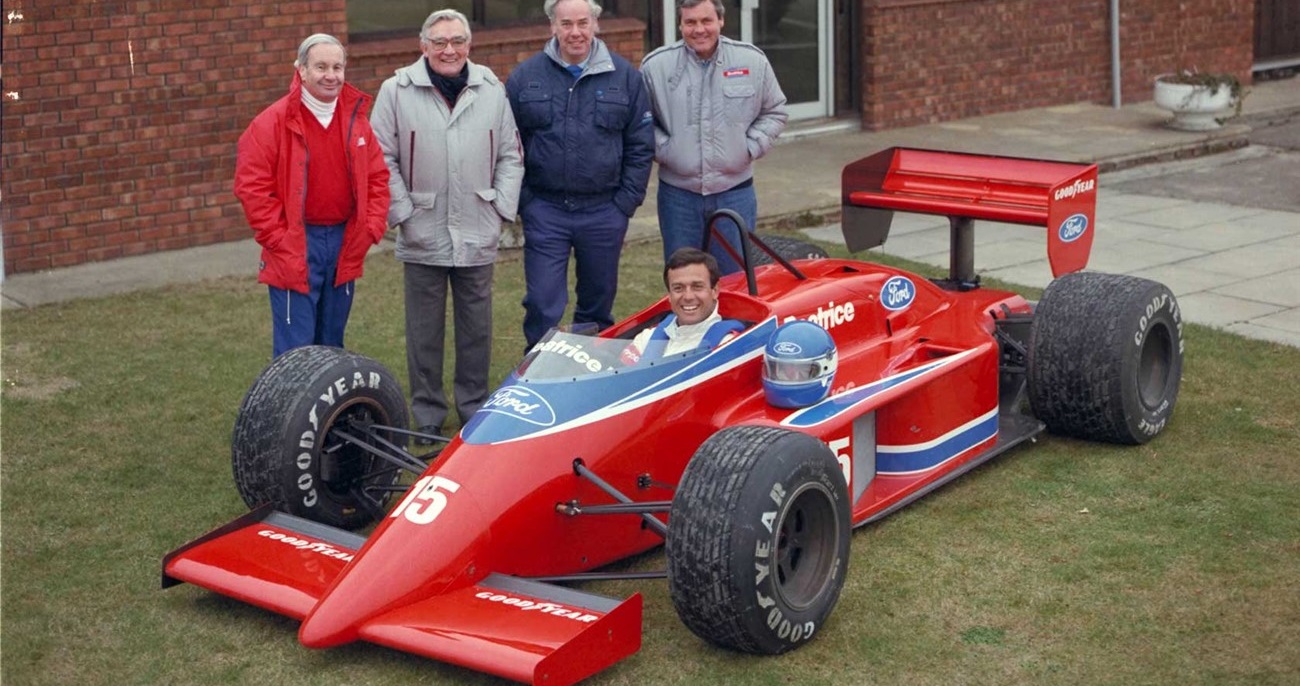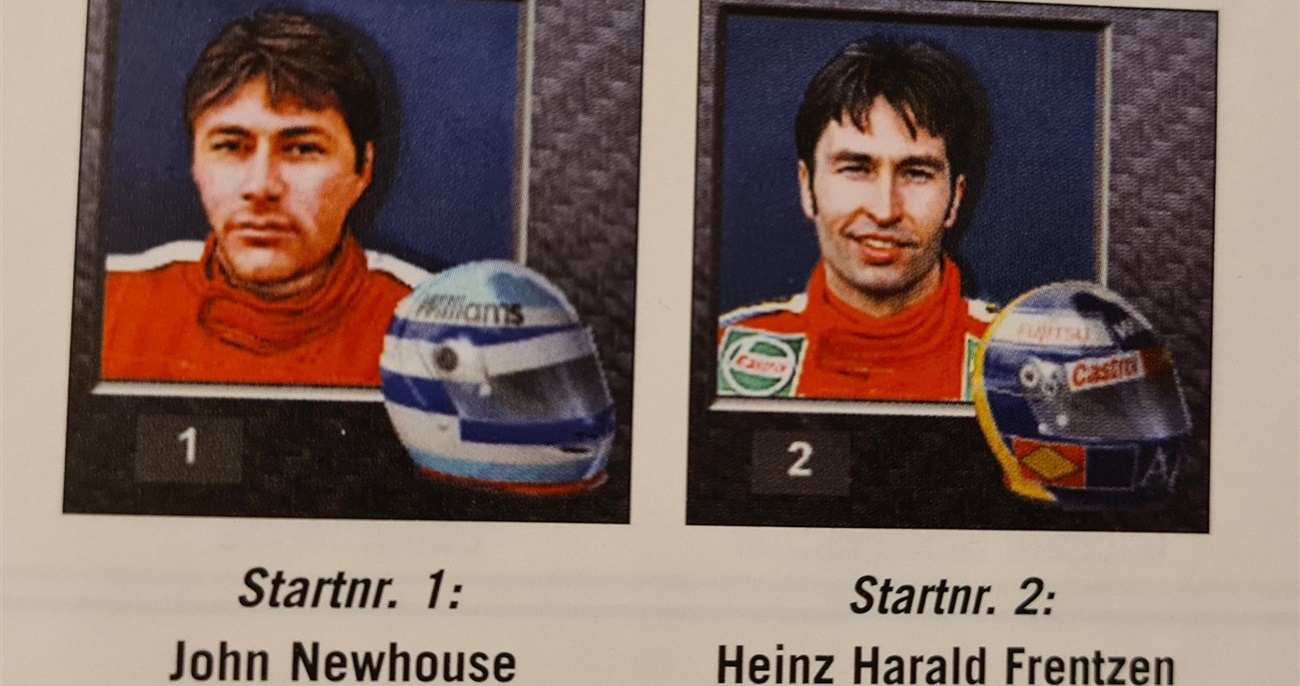Let me take you back in the time capsule, it is October 1985. The Formula One is just in their winter sleep as out of sudden the news appears of a new team planning to enter the Formula One in 1986. Good news, as several teams were rumoured and announced to leave the Formula One. Ekström Grand Prix Racing was the name of the team. Under the lead of Swiss-domiciled Swedish woman and her sometimes race driver husband George Paulin. It may Formula One’s weirdest story of a new team.
The story of the Ekström’s starts years earlier. Cecilia Ekström was a known person in the Formula One. She worked in the late 1970s as sponsor hunter for several teams. On her CV are Brabham, Lotus and March. She knew how the commercial side of the Formula One worked. When she met her sometimes, race driver George Paulin it wouldn’t take long before she would be active as manager for her husband.
The couple decided in late 1984 to enter a car in the newly formed F3000 series, with their Ekström Grand Prix team. The planning was to enter the series with an old Tyrrell 012. During pre-season testing the Tyrrell 012 showed it was far from competitive. They quickly decided to ditch the Tyrrell and purchase the March 85B, which was the best option at that time to use. Thierry Tassin was chosen as their driver, however later would be chosen for the American Eric lang. Lang wasn’t able to show good results and even came in conflict with Team Ekström.
While the team was planning to attempt all races that season, Eric Lang claimed the car as his sponsor purchased the car for the team. Both Cecilia as Eric arrived at the courtyard where Eric’s claim was to receive the car. The court was at Eric Lang’s side and decided the car should go to Eric Lang. It would take up to September before Eric Lang could enter the car for the last race. Ironically the car was entered under the name Team Ekström. Thierry Tassin would race that season with PMC Motorsport and Eddie Jordan Racing in the F3000 series.
With no results scored in the F3000 series and with the strange conflict occurred with Eric Lang, Cecilia Ekström decided it was time to enter the Formula One. During the fall of 1985, Ekström Grand Prix started to become reality as a Formula One team. The plan was to debut the Ekström GP-8601 / GP 86-01 (during my research I found out both chassis indication numbers were used) during the San Marino Grand Prix. It is not sure if the original idea was to debut with one or with two cars that year.
In the very early stage it seems that Wiet Huidekoper together with Tim Feast were contracted in September 1985 to design the still-born GP-8601. However, that same stage Wiet Huidekoper left the team already to return in a later stadium, as you will read later. Tim Feast would be the main designer of the Carbon-fibre Ekström GP-8601.
Between September 1985 and January 1986 Cecilia and George held several meetings with future Ekström Grand Prix drivers. While sources say the team was meant to enter with two cars I assume it was just with one car, considering the efforts in searching just one driver. Philippe Alliot, who had just finished two horrible seasons with the RAM team, was the first driver. Soon the conversation between the two would end. In 1986, Alliot would drive for the French Ligier team. Scoring one point.
Soon Cecilia was on speaking term with the Swedish driver Eje Elgh, who is now Marcus Ericson’s manager, about a drive for 1986. In 1985 Eje Elgh was active in the Sportscars and the Japanese Formula Two. Cecilia asked 500.000 USD for the seat. Elgh declined the offer very soon. The intention from the team was to contract Eje Elgh and gain Swedish sponsors.
Now Elgh had declined the offer to drive for Ekström Grand Prix in 1986, the team was looking for other drivers. Some classifications were pin pointed. Besides the needed talent and experience, the drivers should have as well their own financial backing. Contact was there with Brazilian Roberto Moreno and with Kenny Acheson from North-Ireland. Another candidate for the seat was Mauro Baldi. Mauro drive for the Spirit Team in 1985 and 1984 with zero results. In 1985, the Spirit team lost it Spirit and pulled out the plug of their Formula One team after the first three races of the season. With the result, that Mauro Baldi had no drive. Baldi’s sponsors were to pay 300.000 dollar for the seat. However, the sponsors would only give the money when Ekström Grand Prix completed their GP-8601 to the public.
During the negotiations that were happening between late 1985 and early 1986, the team had 14 people on their pay roll. They headquarters was establish in Llanz in Switzerland. Below is an overview of people that were under contract of Ekström Grand Prix;
Team Owner / Manager: Cecilia Ekstrom and George Paulin
Engineer: Peter Hosang
Chief mechanic: Paul Cherry
Sports Director: Paul Cherry and Cecilia Ekstrom
Electronics: Piers Paulin, probably family of George Paulin
Car design: Lars Goran Andersson
Designer: Wiet huidekoper and Tim Feast later it would be Dave Kelly.
Mechanic: John Edwards
Ekström Grand Prix signed a deal with Motori Moderni to use their V6 Turbo engines (Tipo 615-90 1.5) , the engine was in the back of the Minardi in 1985 and far from reliable and very thirsty. However, improvements where promised and honestly the team did not have any other chose at that moment. Motori Moderni was the company of former Ferrari and Alfa Romeo engine tuner Carlos Chiti, was a few years earlier fired at Alfa Romeo. He was eager with his company to conquer the Formula One with reliable and “cheap” engines. We have to understand that Motori Moderni was not their first chose.
In the early stage of creating Ekström Grand Prix Cecilia and George were looking after either the Renault turbo engine or the BMW turbo engine. Due their small operating budget, they could not afford any of the engines. In a later stadium, Dave Kelly would negotiate a deal with Cosworth to use their brand new engine. This never happened either as Cecilia Ekstrom failed to pay the bills and salaries of their works. Which you will read later in this story. Pirelli would supply the team with the needed tyres.
Cecilia told in an interview with the Swiss Television station SRF, which was aired on the 17th of February 1986, that the team’s budget was around 2,5million and 3million dollar. Compared to other teams it was a bit low. However, their plan was to gain a budget up to 8million dollar for 1987. Cecilia told as well that the machinery would arrive soon to the workplace so the team could start working on the GP-8601 in a short period.
The hunt for sponsorship seemed in the beginning to be very good. However, it would be very soon clear that finding sponsors would be a hell of a job. Mostly because they did not believe in the team. As said earlier they tried to contract Eje Elgh to gain Swedish sponsorship. Later on negotiations were on going with skin care company Fleur de Santé and with Hennes & Mauritz, better known as H&M. As well, they contacted the Swiss Bank, Schweizerischer Bankverein for an eventual co-operation between the two. After the bank studied the documents and paperwork from Cecilia, it is said, that the bank quickly turned down the offer, even a date was named on several sources 9th of July 1986. As well the negotiations with H&M and Fleur de Santé ended with a turned down offer.
It is unsure how to explain the sponsorship negotiations with BAT (British American Tobacco), it seems Cecilia knew an Swedish representative of the BAT company in Sweden which was willing to explain to the board to sponsor the team. I called BAT but they were not know at all with this information. In addition, Skoal a chewing tobacco brand, was contacted if they were interested in sponsoring the team. Skoal was already know of sponsoring the RAM team (Skoal Bandit). However, due the poor performance of the RAM team (and the waste of sponsor money) the company was not willing to sponsor another “new” team in the Formula One.
As pointed out earlier, the original plans were to debut the GP-8601 during the San Marino Grand Prix, Mauro Baldi was actually on the entry list of the Grand Prix. Due the lack of sponsorship, and the lack of a car, the team was withdraw from the San Marino Grand Prix. Cecilia and George announced in the media that they moved their focus for the next race, the prestige Monaco Grand Prix. This decision was already made earlier In February when it became clear they could not find enough sponsors.
It would give Ekström Grand Prix more time to find their needed sponsors. However, Mauro Baldi’s sponsors became restless as the team showed no efforts at all with their new car. If the team did not show up with the car soon they would pull out of their contract to pay the 300.000 dollar to the team. A tube or tubes were ordered at an Italian manufacturer. I assumed it was Dallara. However, the same story as with BAT. A friend of mine who is Italian contacted Dallara and they didn’t know either about the Ekström GP-8601. I’m not sure which Italian manufacturers could do this as well back in 1986.
To please Baldi’s sponsors Paul Cherry came with the idea to meet up with Carl Haas. Haas was in the situation that his sponsor Beatrice stepped out of the Formula One during the season and Carl Haas needed money. The Lola THL1’s were for sale and a good opportunity for Ekström to appear on the grid. Haas asked 250.000 dollar for three cars inclusive spare parts. An additional 125.000 dollar was asked for the Hart 415T I4 engines. In Total 375.000 dollar. Sadly, the team did not have the financial backing to agree with the deal. It is said that Cecilia was looking to pay only 200.000 dollar for the package.
Around March / April 1986 the first rumours started to appear about Ekström Grand Prix and their changed focus to ditch their aspiration for 1986 and take the time to make their debut in 1987 instead. The main reason for this decision was the lack of financial backing. However, something different was going on in the team’s management. Which I tried to explain as best as possible to make it at least understandable.
Cecilia Ekström told in the interview with SRF, as early explained and viewable below the article, that the team was working hard on their entry in San Marino and basically that all the lights were on green for the team to arrive on the grid. Several wooden and one wind tunnel model were completed by the engineers. In addition, a mock-up of the Motori Moderni V6 Turbo engine was prominent in the workplace. The employees seemed very enthusiastic at that time, well did they know!
The team did their best to keep in the spotlight of the media to tell them everything was going well; all Cecilia (mostly) did was covering up what was really going on in the team. The standard talk was that they were near closing deals with potential companies who were willing to invest money. When the team announced they were to construct the car out of sudden, Tim Feast was sacked by Cecilia because she did not like the current development of the GP-8601. As a result, it seems as it is hard to find concrete details, French designer Christian vanderPleyn was hired to complete the design. Strangely is the fact that Christian was the technical director at the newly formed AGS and had penned the AGSJH21. As well he would pen the successor JH22 and the JH23.
I am not sure how far Christian was involved with Ekström Grand Prix’s design. I was unable to uncover more information, sadly! Soon Wiet Huidekoper (as far I found out Wiet was re-hired) and Richard Divilia were hired on consultancy base, to complete the design of the GP-8601. It is impossible to find out who completed, if it was completed at all, the design of the car. Dave Kelly was involved as well for the team and on the car.
To raise your sceptics on Ekström Grand Prix, better said to make the case worse, most of the British engineers that were hired did not receive any salary. Some received an amount of 300 dollar for their work. As well most of the work permits that were given for the engineers were false. The team paid neither the machinery they received. Cecilia quickly responded stating that the work permits were legit, and she would not thread her employees badly. Not long after the media figured out that Ekström Grand Prix was not registered at the Swiss Chamber of Commerce. Her response was “It is not illegal not to do so, is it!”
What about the GP-8601? As you read earlier, some Italian manufacturer was asked to build the car.
Ekström Grand Prix never paid a single penny to the manufacturer. I assume the company found out in an early stage the team had no financial backing/support and never started working on the tube for the car. Later former employees stating Cecilia had to pay 30.000 dollar in unpaid wages and prepared a lawsuit. I was unable to find the documentation for it.
Strangely enough, Cecilia Ekström was seen at the grid during the rest of the season, still trying to find the financial backing and to keep them in the news and keep their F1 aspirations alive. In June of 1986 when the storm lay down a bit, Cecilia or George told the media that they were working on a reorganization of their team, and lay their focus on the 1987 season. Moreover, they believed the engines would be cheaper due the restrictions on Turbo engines and the cheaper production of conventional engines.
Even plans were “leaked” for a brand new factory where the team had the facilities to run their team as a professional team. So what was going on? Cecilia proudly told a lot of people that Ekström Grand Prix would apply for the pre-season testing at Rio de Janeiro in 1987. Their brand new Ekström GP-8701 came from Dave Kelly, and their intention was to arrive with two cars. And participate during the season with two Cars. Their first driver would have been Mauro Baldi the second driver Josele Garza.
In December 1986 George Paulin called its key personnel together during a meeting to assure them their unpaid wages would be paid before Christmas! The same time he offered them a new contract for 1987 as well! All he said is that they had to keep faith in the team and start preparations for the pre-season testing. Of course none of the above actually happened.
Dave Kelly himself answered on the autosport Forum about his period with Ekström the follow;
“My name is Dave Kelly ( ex Ram, Benetton, Zakspeed ) and I was contracted by Mrs Ekström to design the car. I completed a design for her, including negotiating an engine contract with Cosworth but when it came to the payment for the engines and my salary, none was forthcoming. This was extremely disappointing as I had fronted the offices and initial deposits myself and this was money lost.
She was very convincing in our discussions; she even showed me the plans for the new factory and told me it was under construction. I flew to Switzerland to meet her on the promise of payment but you’ve guessed it. She never showed.”
You may ask yourself what ever happened with Cecilia Ekström and her husband George Paulin? After 1986, they both seemed to be vanished. Until late 1991 when the couple announced, out of nowhere honestly, they would set up a team to race in 1992 in the World Sportscar Championship, it was the series final season. George Paulin entered with the JM19C, in Monza with co-driver David Coyne for team GeePee Argo Racing.
According to Racingsportscars.com Paulin was on the entry list for three more races. One of them was the 24 heurs du Mans that year. A year earlier jaguar decided to quit Sports Car Racing and the plan was to buy some of the Jaguars and enter them as a privateer. Paulin together with Coyne and Italian Stefano Sebastiani were to race with the Jaguar XJR-12 but they never showed up. GeePee, as far as I found out, was the new team of Cecilia Ekström and George Paulin.
It would take another eight years before George Paulin would race again, as far the records shown. Between 2000 and 2004 he attempted several endurance races. For most of the races he failed to showed up or he simply failed to qualify their cars. Some sources say he raced until late 2006 in some endurance races. Though he was so successful, it is almost impossible to find records of it.
Is this the end of Cecilia and George with their aspirations to enter the Formula One with Ekström Grand Prix? NOPE! Is the answer. I found out that George Paulin was interested If not involved in a buy out of the Pacific Grand Prix team in 1995. Pacific was desperate for an financial injection as the team was more dead than alive. I assume that behind these plans was Cecilia. Pacific had the deal with keeping Team Lotus alive, and was interesting to take it over. Never happened of course.
So where are Cecilia Ekström and George Paulin today? I really have no clue, nor a lead where they could be. I believed I was able to figure it out. In the end, I was able to be in contact with Charles Nickerson, the person behind the failed and intriguing Phoenix Grand Prix story. Sadly, I was not able to figure it out for both Cecilia and George. Nor people who were involved with the Ekström Grand Prix project were willing to help with information. It seems people still have some strange feelings about it.


